Wat Arun or Temple of Dawn is one of the most visited and famous temples in Thailand and we went to see it despite it still being under construction (there was little time left for the scaffolding to be removed), located in the Yai district of Bangkok.
This temple is a bit different due to its architecture, with a large Khmer-style central tower 86 meters high and its location next to the Chao Phraya River. For that reason alone, you should add it to your list of must-see places in Bangkok.

The whole complex offers a picture that makes it a marvel to behold regardless of the time of day you visit it, because, although sunrise is its nickname, sunset is even more spectacular, when the illumination of the temple brings out all its beauty.
Wat Arun is one of the must-sees if you are traveling through Thailand, although we were unlucky enough to see it under construction and not be able to see it in all its splendor.
To visit it, you can take a taxi or one of the boats that make the route along the Chao Phraya River. The ideal time to see it is at sunset, because, when the sun goes down they turn on the lights and it is spectacular. The problem then is that you have to take a taxi back, because the boats no longer pass by.
One option is to book an evening tour of Bangkok visiting Wat Arun and other visits that are included in the package.
We leave here a photo of it before its restoration (with a different color) so you can see for yourself its beauty.
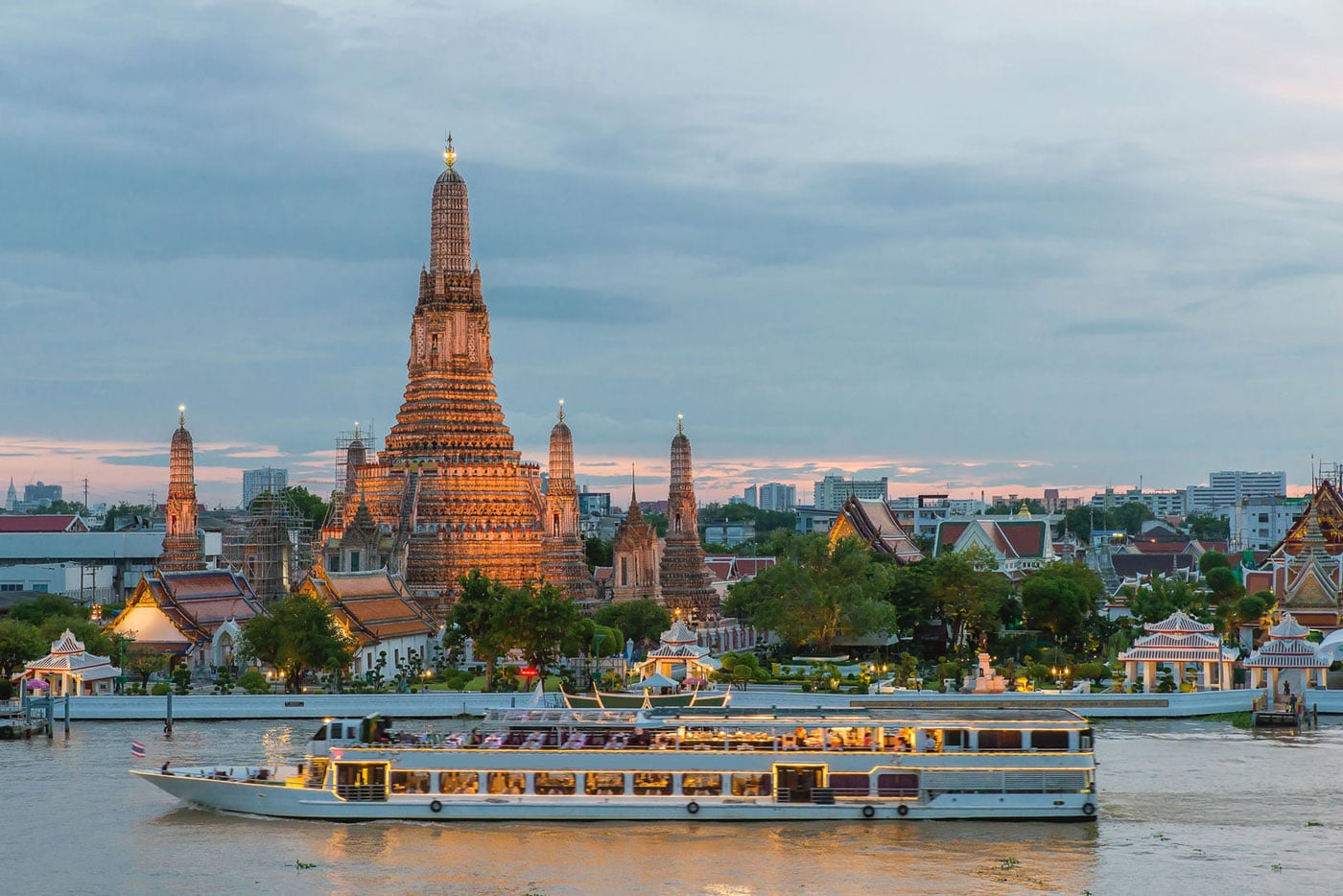
Wat Arun Temple was built at the time when Ayutthaya was the ancient capital of Thailand, and was originally known as Wat Makok (Olive Temple). In the following period, when Thonburi was the capital, King Taksin changed its name to Wat Chaeng.
It is worth mentioning that the Emerald Buddha was located in the temple for a short period of time before being moved to Wat Phra Kaew (literally the Temple of the Emerald Buddha) in 1784.
Later, King Rama II changed the name again, this time calling it Wat Arunratchatharam, restored it and enlarged the central prang. The work was completed by King Rama III. It was King Rama IV who gave the temple its present name, Wat Arunratchawararam.
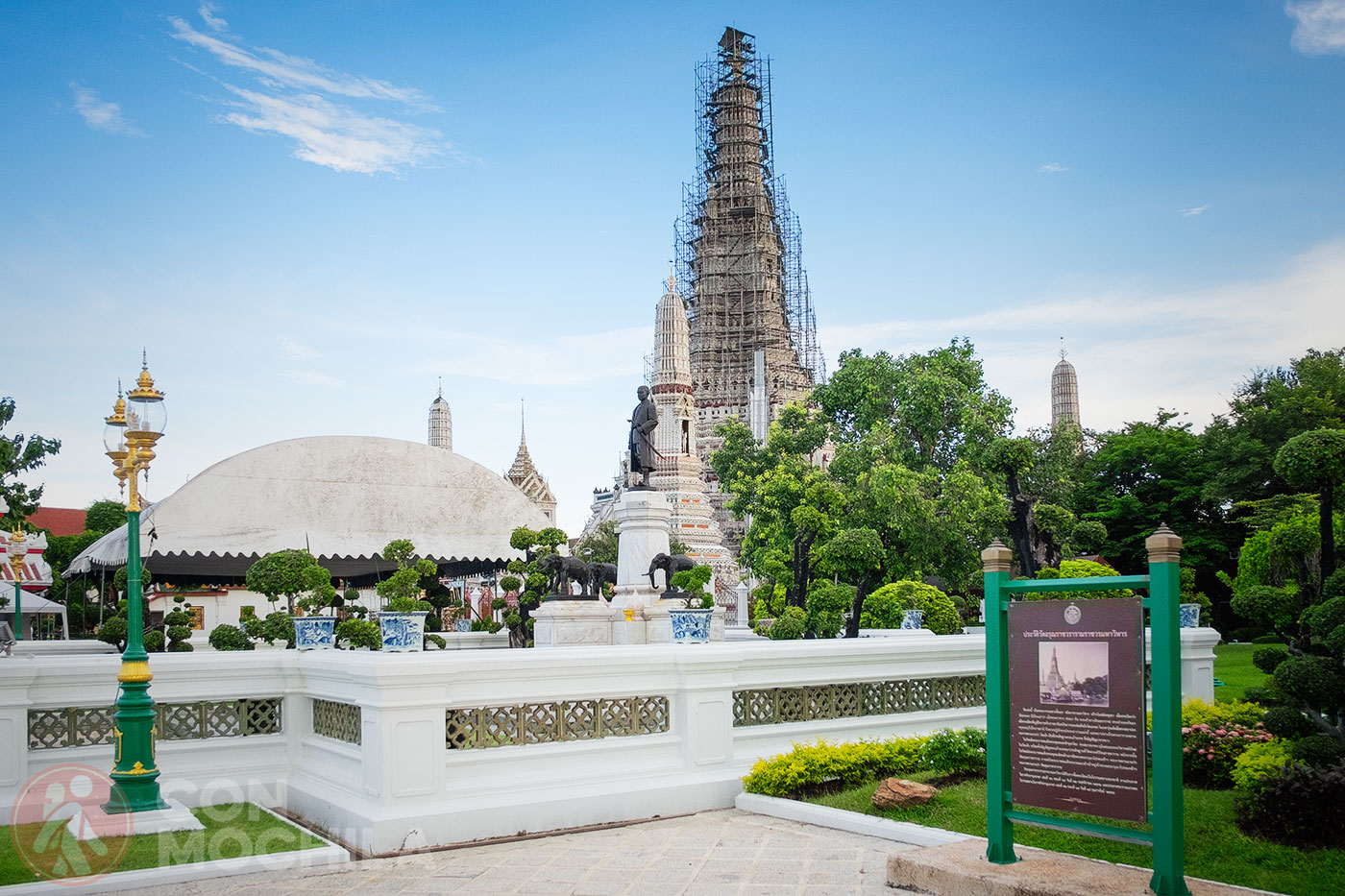
The temple underwent major restorations during the reign of King Chulalongkorn (Rama V, 1868-1910) and in 1980, prior to the bicentennial celebration of Bangkok’s founding.
The most extensive restoration work on the prang was carried out between 2013 and 2017, during which a considerable number of broken tiles were replaced, and lime plaster was used to refinish many of the surfaces (replacing cement used during previous restorations).
As work neared completion in 2017, photographs of the results attracted some criticism for the temple’s new appearance, which appeared white-washed compared to its previous state. The Department of Fine Arts defended the work, stating that it was carefully made to reflect the temple’s original appearance.
The main feature of Wat Arun is its central prang filled with colorful porcelain surrounded by other prangs on its sides. The prangs (towers) are decorated with seashells and pieces of porcelain that had previously been used as ballast by ships arriving in Bangkok from China.
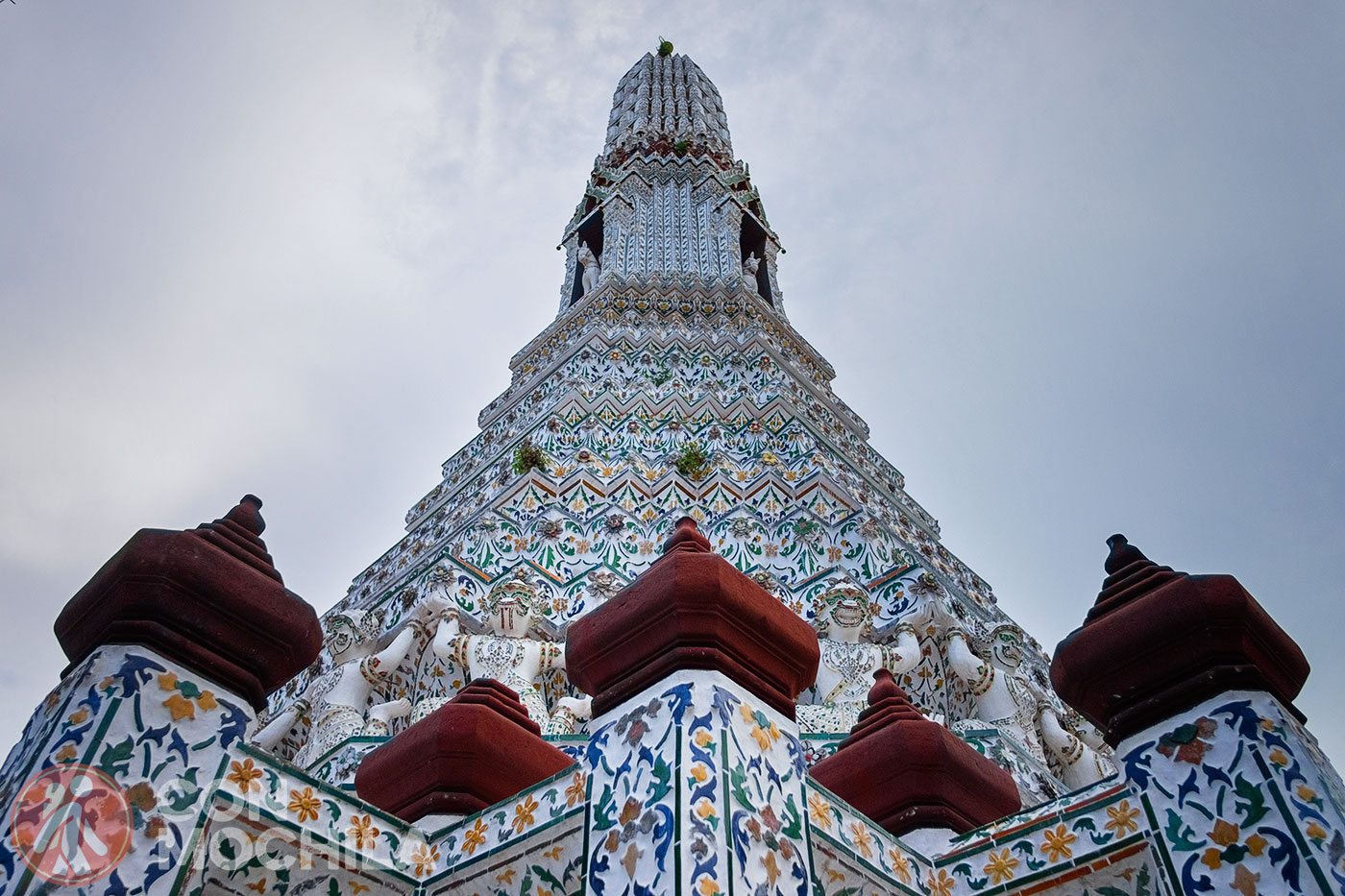
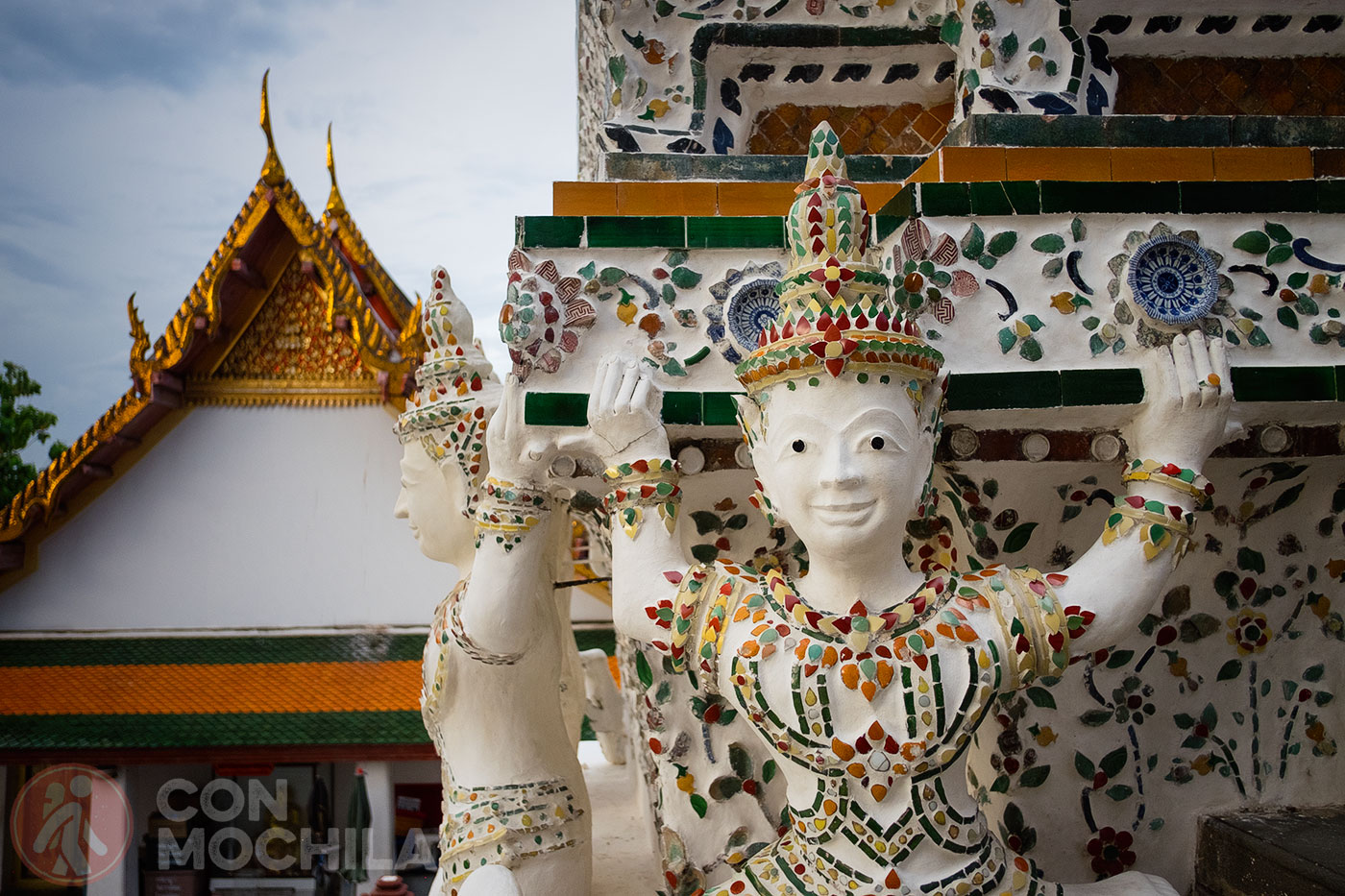
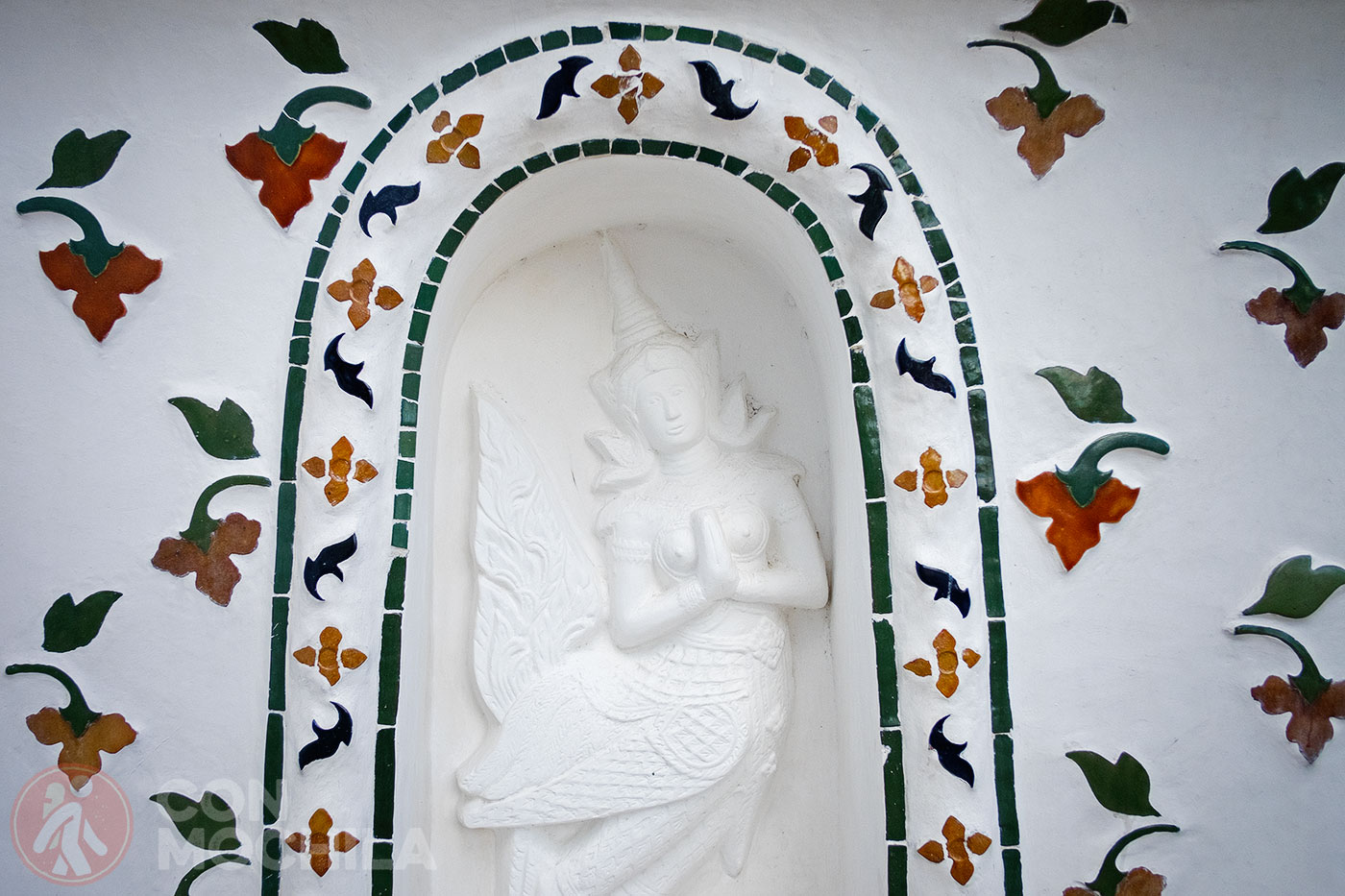
The central prang is topped with a seven-pointed trident, referred to by many sources as the “Trident of Shiva.” Around the base of the prang are various figures of ancient Chinese soldiers and animals.
On the second terrace there are four statues of the Hindu god Indra riding Erawan, and, on the river bank, six Chinese-style pavilions made of green granite.
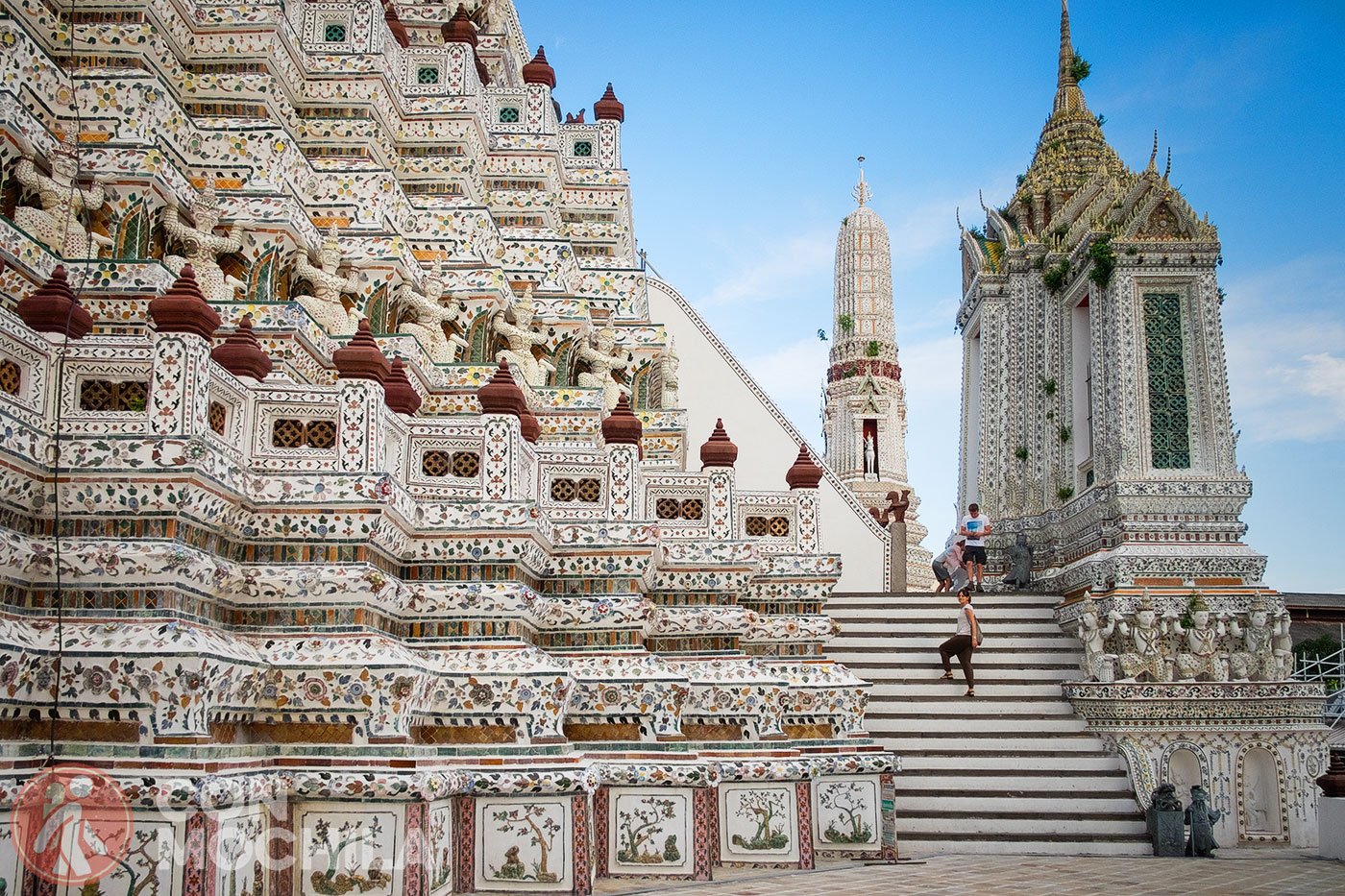
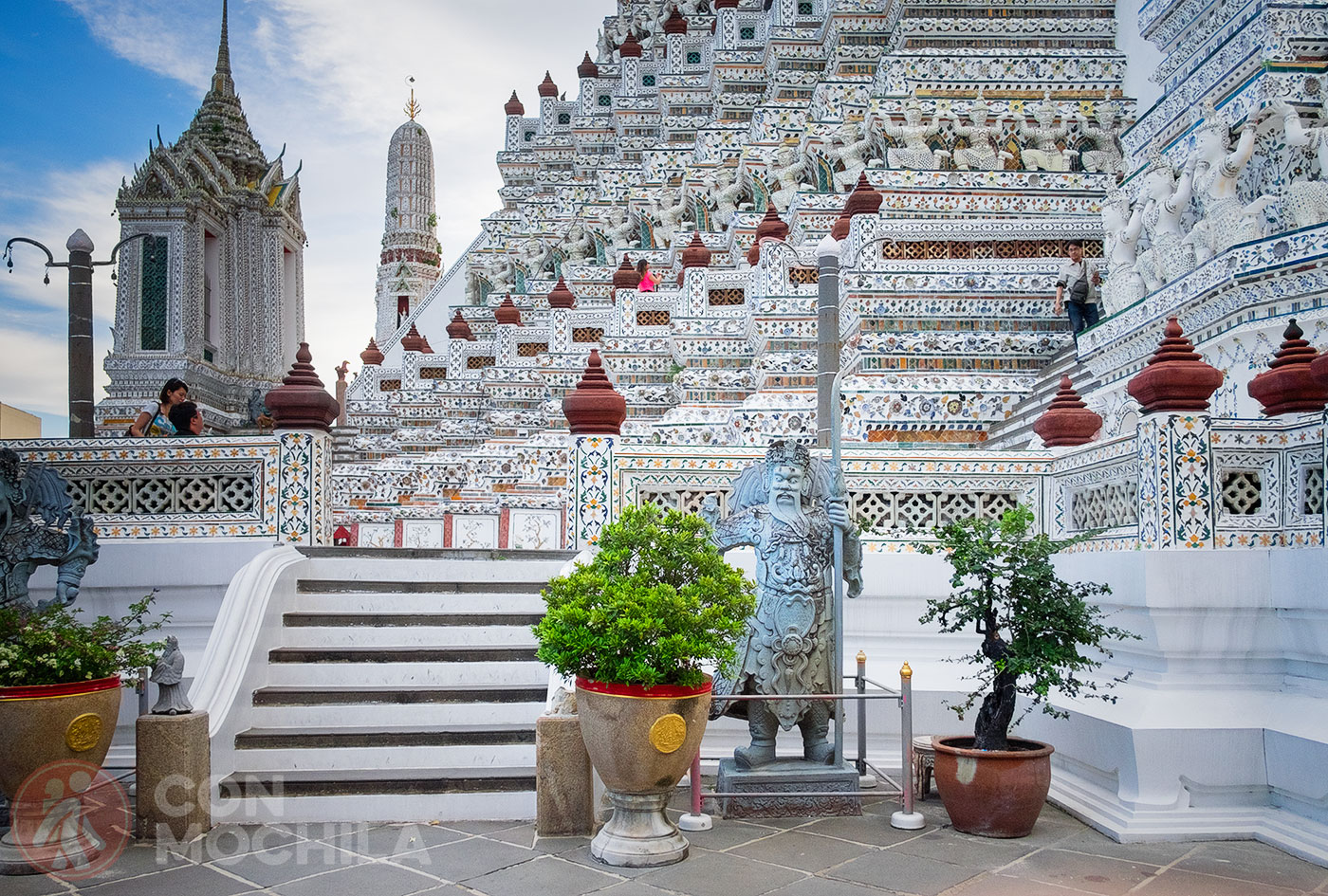
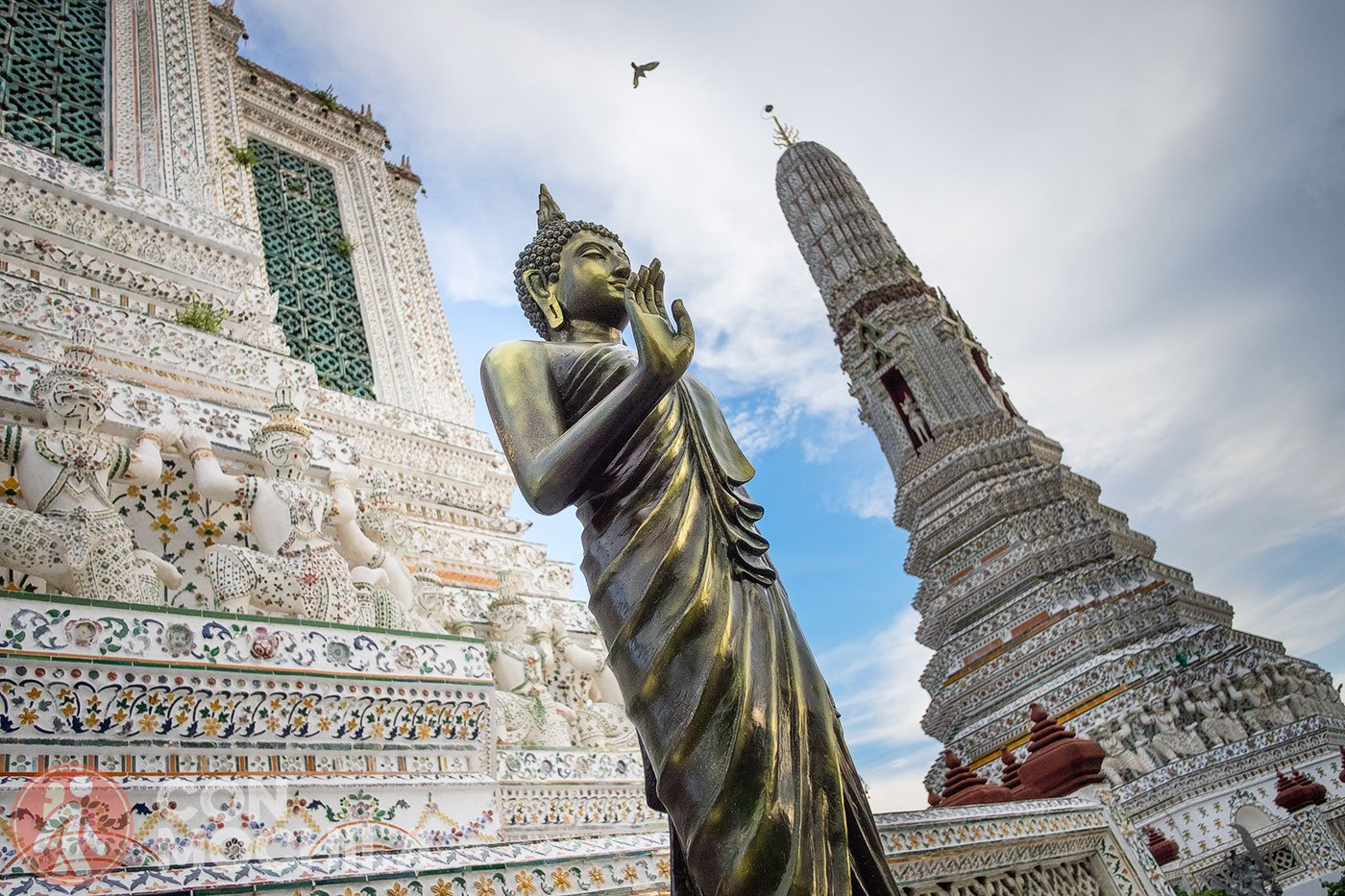
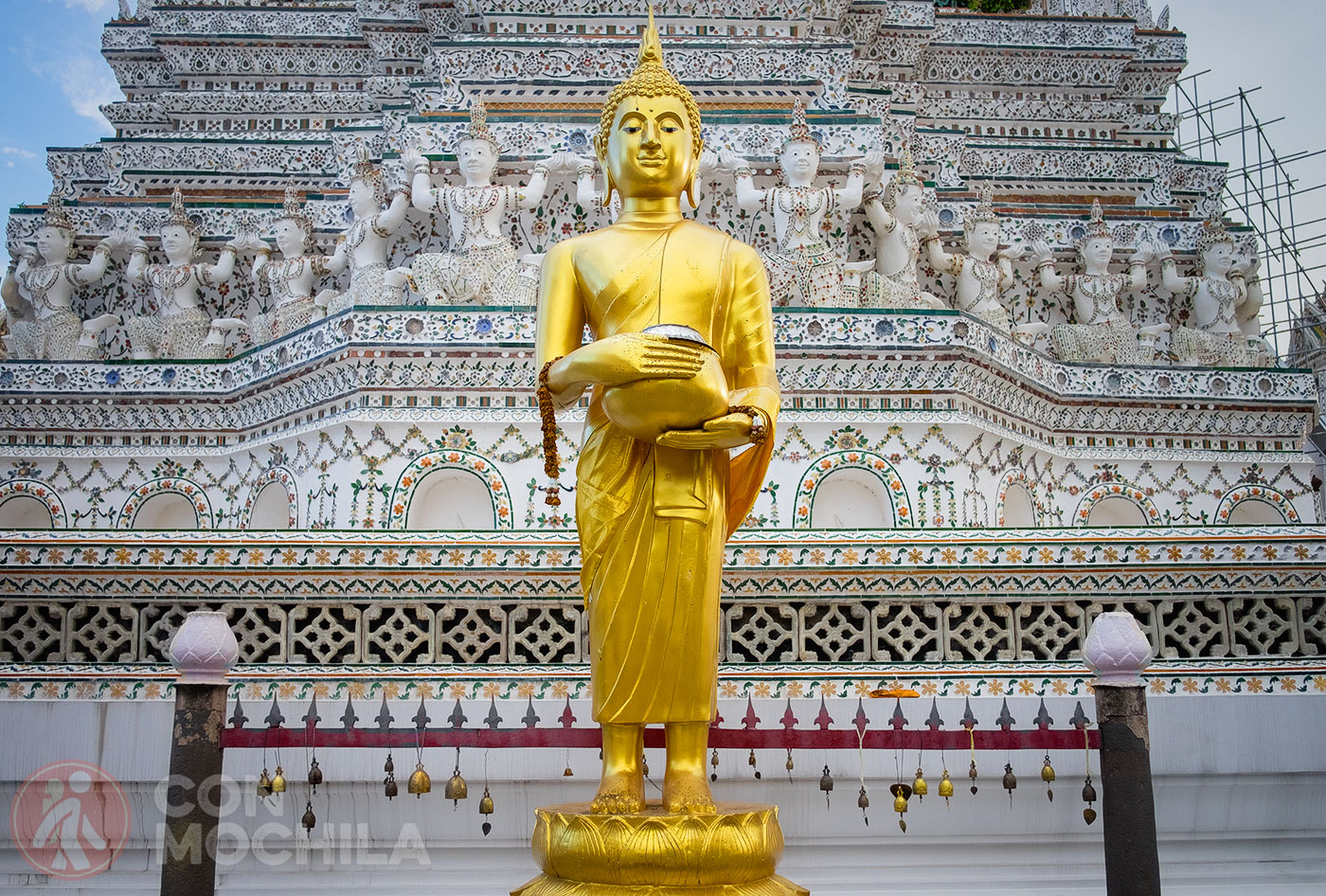
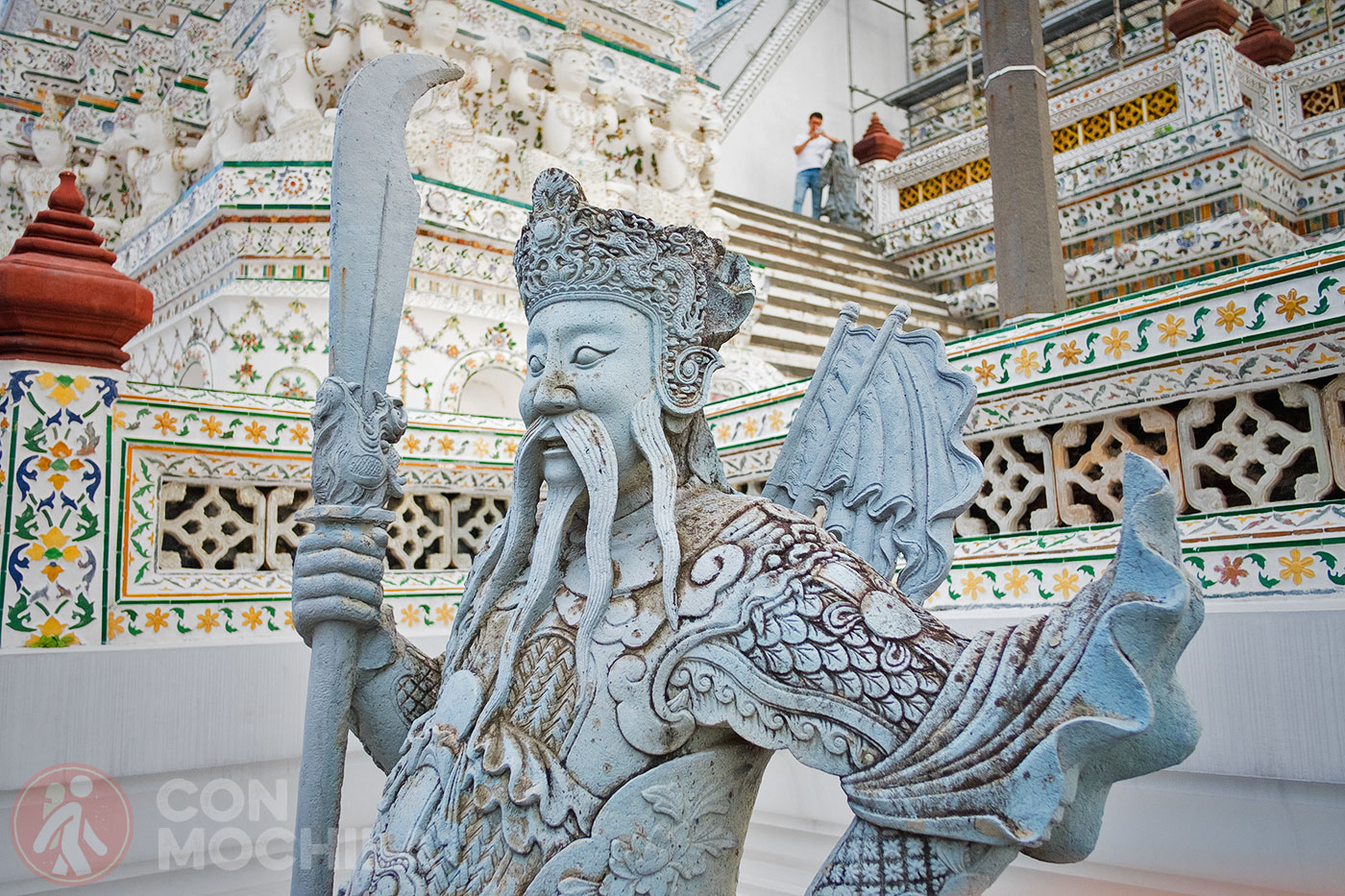
Next to the prang there is the ordination hall, with an image of Niramitr Buddha supposedly designed by King Rama II. The main entrance of the ordination hall has a roof with a central tower, decorated in coloured ceramics and coloured stucco as well.
There are two demons, or temple guardian figures, at the back.
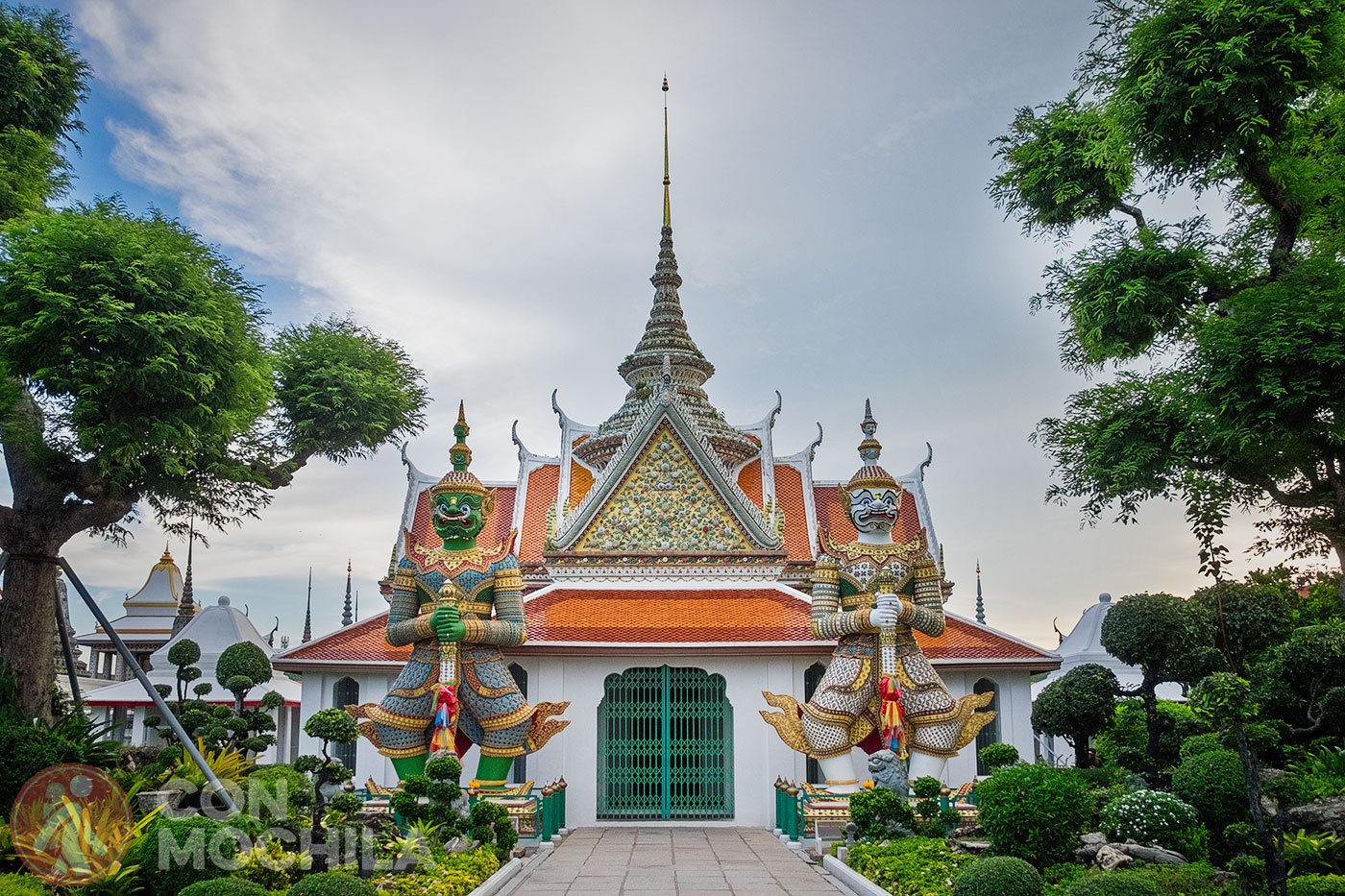
As a curiosity, it is worth mentioning that from Wat Arun, standing on one of its terraces, you can see the Royal Palace of Bangkok and Wat Pho.
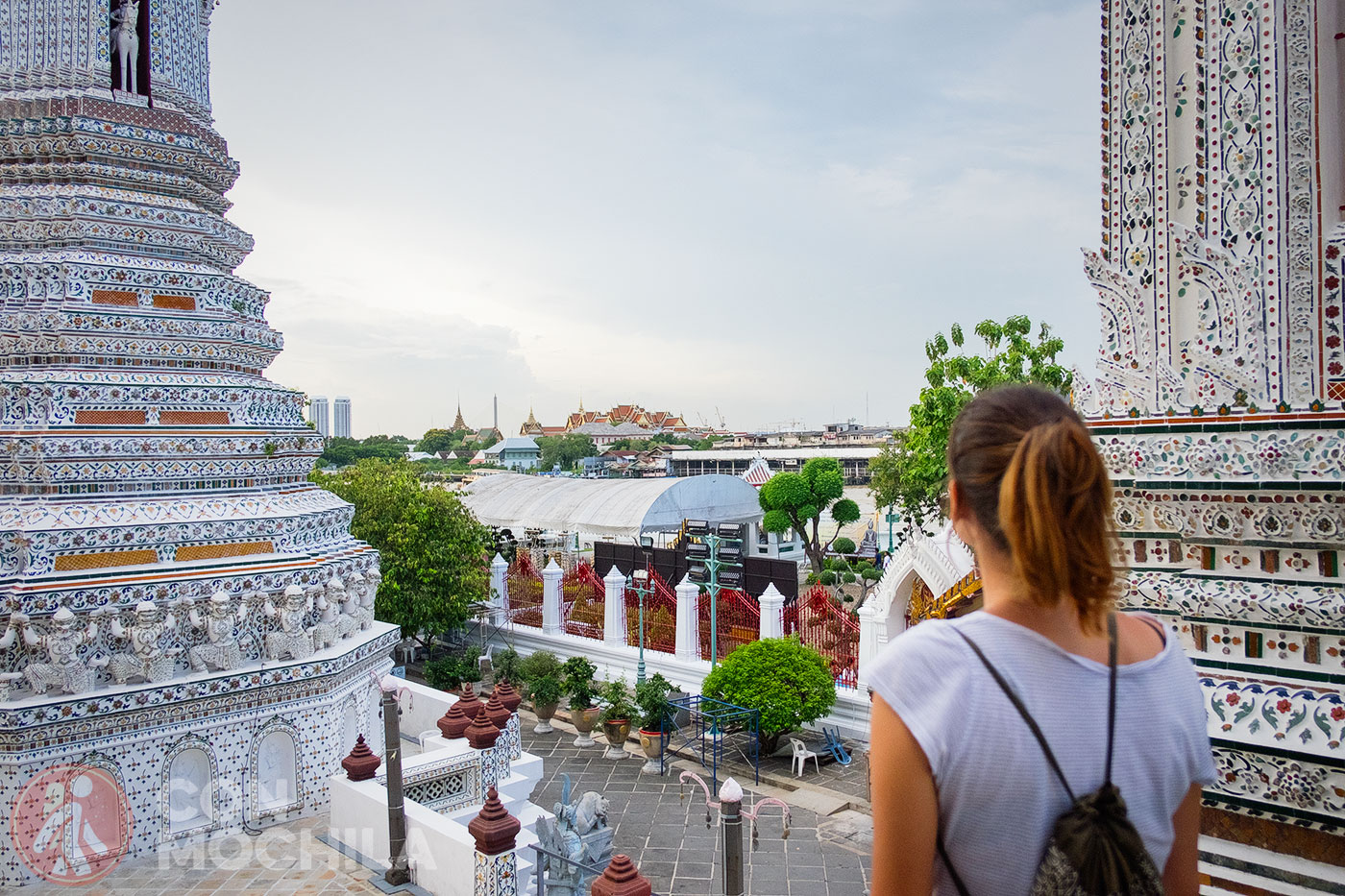
ACTIVE CAMPAIGN !
Until december 1st, you can get an automatic 15% discount on your Heymondo travel insurance.